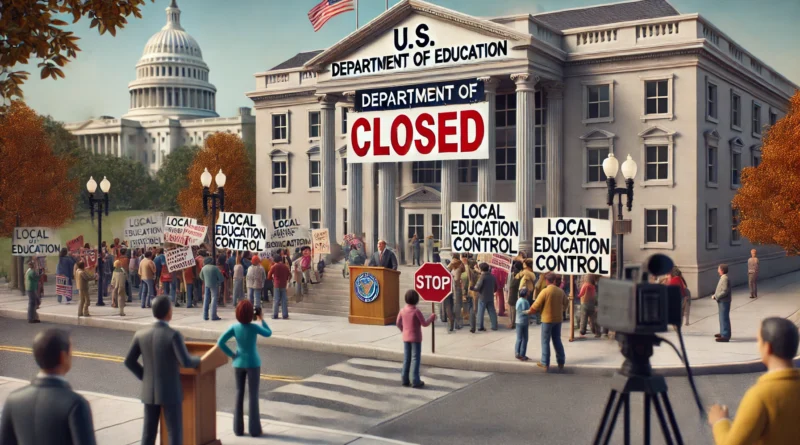Trump Administration Takes Controversial Step: Order Signed to Close Education Department
In a surprising turn of events, President Trump signed an executive order yesterday aimed at closing the U.S. Education Department. This decision has sparked intense debates among government officials, educators, and citizens across the country. The move is seen by supporters as a necessary step to reduce bureaucracy, while critics warn that it could have lasting negative effects on the nation’s education system.
The Education Department has long been responsible for shaping national education policies and managing federal funds for schools and universities. Its role includes ensuring that students receive equal opportunities in learning, protecting the rights of students with disabilities, and supporting educational research. However, the recent order suggests that the Trump administration believes the agency has become too large and inefficient, prompting a radical restructuring of how education is managed at the federal level.
According to officials within the Trump administration, the order is designed to cut government waste and promote a more streamlined approach to education policy. “We need to remove layers of bureaucracy that hinder progress,” an administration spokesperson explained. “This order is about empowering local communities and giving states the freedom to tailor education to their specific needs.” Supporters of the order argue that local governments and private organizations are better suited to manage education, believing that a smaller federal footprint could lead to more innovation and accountability at the local level.
On the other side, many educators and policy experts have voiced serious concerns about the potential fallout from closing such a critical department. They fear that dismantling the Education Department might lead to a loss of federal oversight, which has helped protect students’ rights and ensured that funding reaches those who need it most. Critics worry that without a central agency, there could be an increase in educational inequality, especially in low-income areas where local resources are limited. “The federal government plays a crucial role in ensuring every child gets a fair chance at quality education,” said a spokesperson for a national teachers’ union. “This decision could widen the gap between rich and poor communities.”
Local school districts are already bracing for changes that may come quickly after the order is implemented. Some district officials are concerned that a rapid shift in funding and oversight could disrupt ongoing educational programs and leave schools scrambling for support. As states begin to discuss how to take on new responsibilities, many worry about the long-term impact on teachers, students, and school administrators who have relied on federal guidance for years.
The order is part of a broader agenda by the Trump administration to overhaul various federal agencies deemed inefficient or redundant. While the decision to close the Education Department is unprecedented, it reflects a consistent push towards reducing federal involvement in areas traditionally managed by government agencies. The administration claims that this move will not only reduce costs but also foster a more competitive and innovative education environment. However, experts caution that the transition period might be difficult, with unforeseen challenges that could arise from such a dramatic change in policy.
The reaction among political leaders has been mixed. Some Republican lawmakers have expressed their support, viewing the move as a bold step towards a more efficient government. In contrast, many Democrats have condemned the decision, arguing that it undermines the progress made in improving public education over the past decades. Lawmakers from both sides of the aisle are now calling for hearings and further investigations into the order’s potential impacts, highlighting the deep divide on education policy in the country.
As live updates continue to roll in, many citizens remain uncertain about what the future holds for American education. Social media platforms are abuzz with debates, as parents, teachers, and students express their opinions on the dramatic move. Community meetings and public forums are being scheduled in several states, where concerned citizens hope to gain a clearer understanding of the implications of closing the Education Department.
In conclusion, the decision by President Trump to sign an order aimed at closing the Education Department has ignited a heated debate that touches on issues of federal authority, educational equality, and government efficiency. With supporters emphasizing the potential for reduced bureaucracy and enhanced local control, and critics warning of the risks to educational equity and student support, the nation now watches closely as this policy unfolds. The coming weeks and months will be crucial in determining how the order is implemented and whether the hoped-for benefits will outweigh the concerns raised by many across the country.
Note: This post was created with the help of AI, and all the data used was collected from reliable websites.



